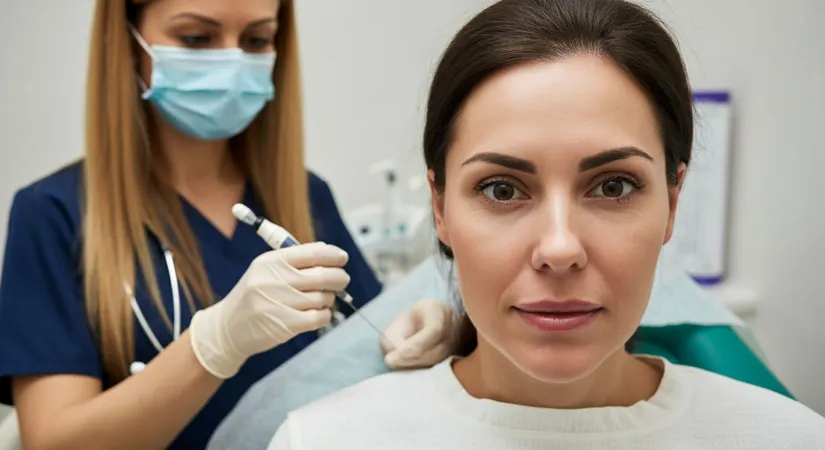How to Remove Skin Tags: Safe and Effective Methods
Learn safe and expert techniques for removing skin tags effectively at home or with professional help.
Skin tags are small benign growths that can appear on various parts of the body. These fleshy growths, while harmless, can sometimes become an aesthetic concern for many individuals. Understanding the nature of skin tags and how they form is crucial in exploring effective and safe methods for their removal. Removing skin tags need not be a daunting task if done with proper care and knowledge, ensuring that the process is safe and effective.
Skin tags commonly develop on areas where there is friction, such as the neck, armpits, and eyelids. For some, they may appear as a result of aging or due to genetics. While not all skin tags need to be removed, some individuals prefer to remove them for cosmetic reasons. It's essential to follow the right techniques and use appropriate products to avoid any potential complications.
Understanding Skin Tags and Their Causes
Common Locations and Characteristics of Skin Tags
Skin tags, or acrochordons, are small, benign growths that often appear in areas where skin rubs against skin or clothing. These growths are typically flesh-colored or slightly darker, and they consist of loose collagen fibers and blood vessels. Common locations for skin tags include the neck, armpits, groin, and eyelids, where friction is frequent. Both men and women can develop skin tags, but they are more prevalent in older adults and individuals with certain conditions like diabetes or obesity.
Factors Contributing to Skin Tag Formation
The exact cause of skin tags is not fully understood, but several factors are believed to contribute to their development. Skin friction in sensitive areas is a primary factor, as it can lead to the formation of these growths. Hormonal changes, particularly during pregnancy, can also increase the likelihood of skin tags. Additionally, there is a genetic component, as skin tags often run in families. Although benign, it's important to monitor any changes in their size, shape, or color, as these might require professional evaluation.
Genetic and Hormonal Influences on Skin Tags
- Genetic predisposition: Skin tags often run in families, indicating a hereditary component.
- Hormonal changes: Pregnancy and hormonal fluctuations can increase the risk of developing skin tags.
- Age-related factors: Older adults are more prone to skin tags due to changes in skin elasticity and collagen.
Understanding these influences can help in identifying potential risk factors and taking preventive measures. For more information on safe removal techniques, you can explore effective and safe techniques for removing skin tags.
Monitoring and Managing Skin Tags
- Regularly check for changes in size, shape, or color of skin tags.
- Consult a dermatologist if any unusual changes occur.
- Consider professional removal options if skin tags cause discomfort or cosmetic concerns.
By staying vigilant and informed, individuals can manage skin tags effectively and seek appropriate treatment when necessary.

How to Remove Skin Tags at Home: Safe Methods
Effective At-Home Skin Tag Removal Techniques
Removing skin tags at home can be a practical solution for many, but it's crucial to prioritize safety to avoid complications. One effective method is using over-the-counter skin tag removal kits, which often include cryotherapy tools. These kits work by freezing the skin tag, causing it to fall off naturally over time. Another popular approach involves applying topical creams with natural ingredients like tea tree oil, which gradually dries out the tag.
- Over-the-counter kits: These often include cryotherapy tools for freezing skin tags.
- Natural creams: Ingredients like tea tree oil can help dry out skin tags.
- Hygiene: Ensure cleanliness to prevent infection during the removal process.
While these methods can be effective, they require careful application, especially near sensitive areas like the eyes. Always follow instructions precisely to minimize risks.
Step-by-Step Guide to Safe Skin Tag Removal
- Prepare the area by cleaning it with soap and water to reduce infection risk.
- Apply the chosen treatment, such as a cryotherapy tool or natural cream, directly to the skin tag.
- Monitor the area for any signs of irritation or infection, and discontinue use if adverse reactions occur.
By following these steps, individuals can safely attempt to remove skin tags at home. However, if complications arise or if the skin tag is in a sensitive area, consulting a dermatologist is advisable.

Exploring the Best Skin Tag Removal Products
Innovative Skin Tag Removal Solutions
In the realm of skin tag removal, innovation has led to the development of various effective products. Cryotherapy-based solutions, such as those offered by brands like Compound W and Dr. Scholl's Freeze Away, utilize freezing techniques to painlessly eliminate skin tags. These products are known for their efficiency and ease of use, making them a popular choice among consumers seeking quick results.
- Freezing technology: Efficiently removes skin tags without causing pain.
- Ease of application: Designed for user-friendly, at-home use.
- Dermatologist recommended: Ensures safety and effectiveness.
These cryotherapy products are particularly beneficial for those looking to remove skin tags safely and effectively at home, without the need for professional intervention.
Natural and Herbal Alternatives for Skin Tag Removal
For individuals preferring a more natural approach, herbal and organic products offer a viable alternative. These products often contain essential oils like tea tree oil or thuja occidentalis, which work by gradually drying out the skin tag. This method is slower but appeals to those who prioritize natural ingredients in their skincare routine.
- Select a product containing natural oils known for skin tag treatment.
- Apply the product consistently to the skin tag as per instructions.
- Monitor the tag's progress, ensuring it dries out and falls off naturally.
These herbal solutions are ideal for those who are patient and prefer a gentle, organic method of skin tag removal. It's crucial to choose products that have been tested and recommended by dermatologists to ensure they are safe for use.
When to Consult a Dermatologist for Skin Tag Removal
Signs You Need Professional Skin Tag Removal
While many skin tags can be safely removed at home, certain signs indicate the need for professional intervention. If a skin tag changes color, grows rapidly, or becomes painful, it's crucial to consult a dermatologist. These changes could suggest underlying issues that require expert evaluation.
- Color changes: A shift in color might indicate a need for medical assessment.
- Rapid growth: Unusual growth rates can signal potential complications.
- Pain or discomfort: Persistent pain warrants professional examination.
Dermatologists possess the expertise to determine whether a skin tag is benign and can offer safe removal options using sterile techniques.
Professional Skin Tag Removal Techniques
Dermatologists employ various methods to remove skin tags effectively. These include cryotherapy, cauterization, and surgical excision. Each technique is designed to minimize scarring and ensure a swift recovery.
- Cryotherapy: Freezes the skin tag, causing it to fall off naturally.
- Cauterization: Uses heat to remove the tag and seal the area.
- Surgical excision: Involves cutting off the tag with precision tools.
These procedures are particularly beneficial for individuals with clusters of skin tags or larger growths that are challenging to treat at home. By opting for professional removal, patients can achieve optimal results with minimal risk of infection.
Innovative Cryotherapy Solutions for Skin Tag Removal
Professional Dermatological Techniques for Optimal Skin Tag Management
Frequently Asked Questions
What are skin tags and why do they form?
How can I safely remove skin tags at home?
What are the best products for skin tag removal?
When should I consult a dermatologist for skin tag removal?
Are there natural alternatives for skin tag removal?
Discover the Path to 'Healthy Beauty' with estethica's Expert Care. Call Now for Your Free Consultation!
📞 Speak with Our Specialists Today!